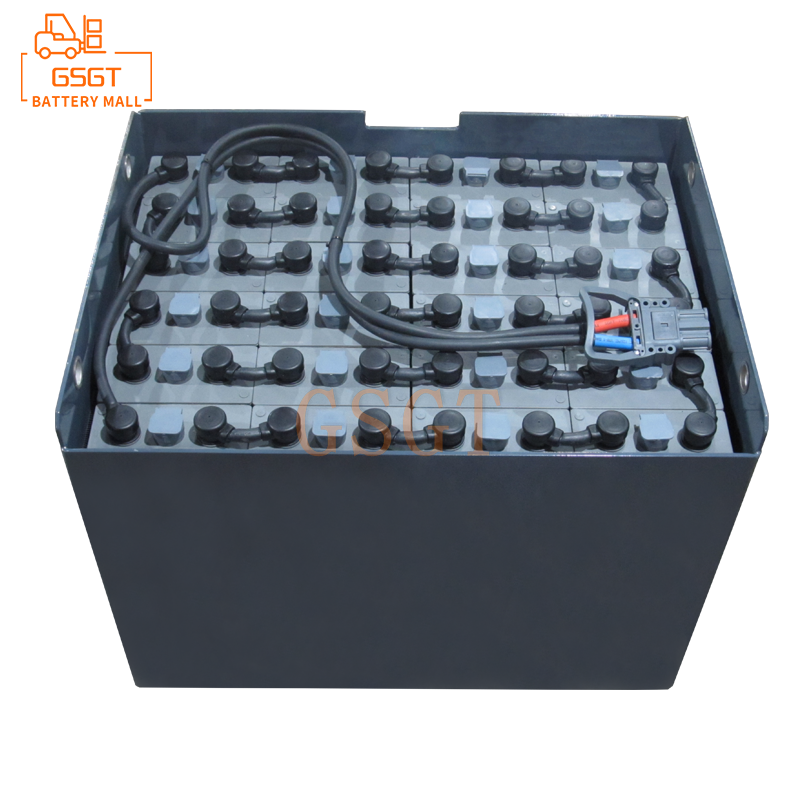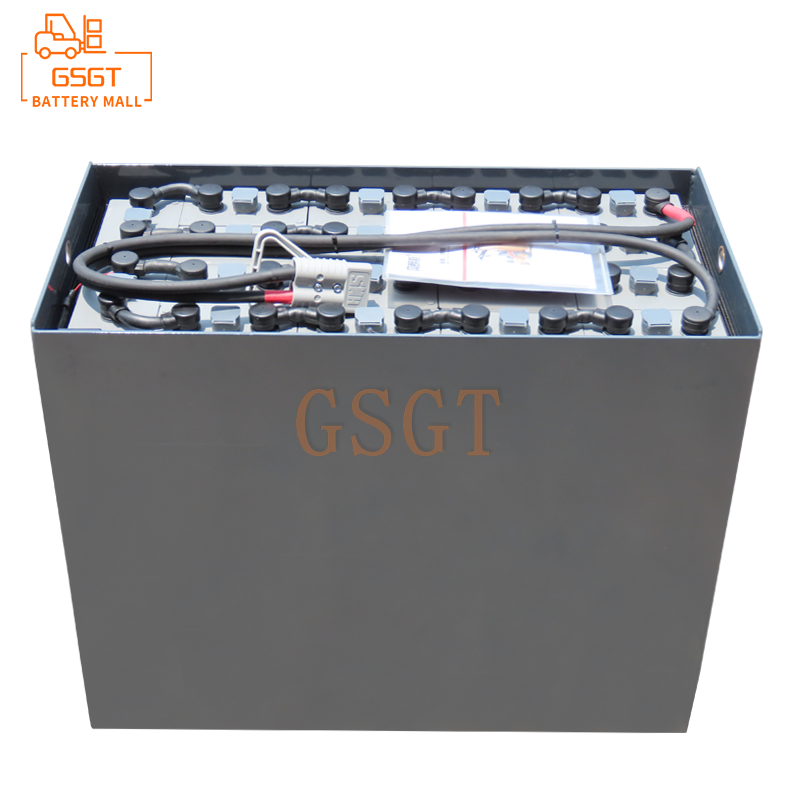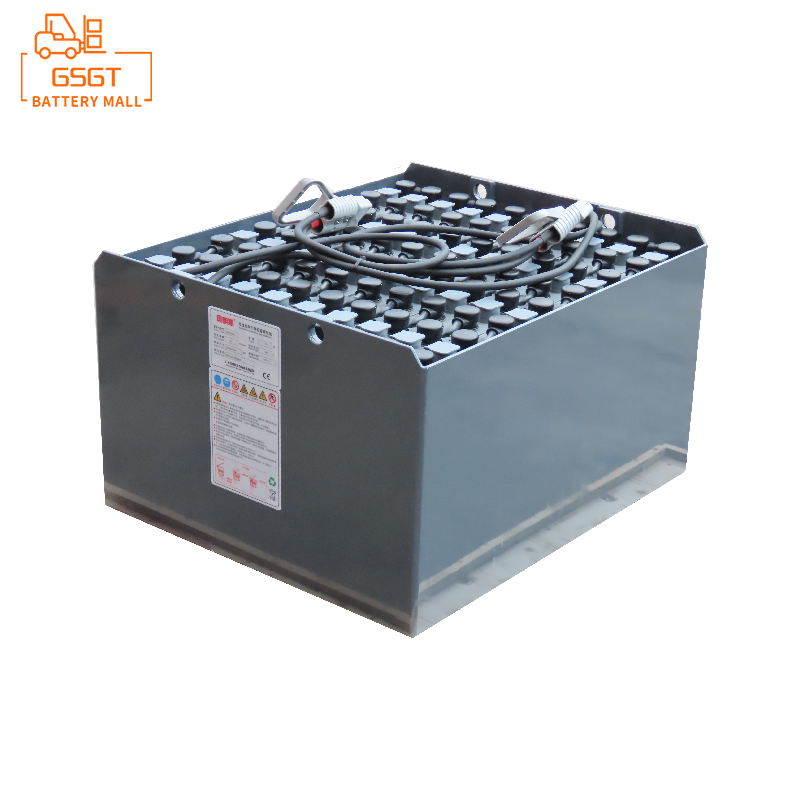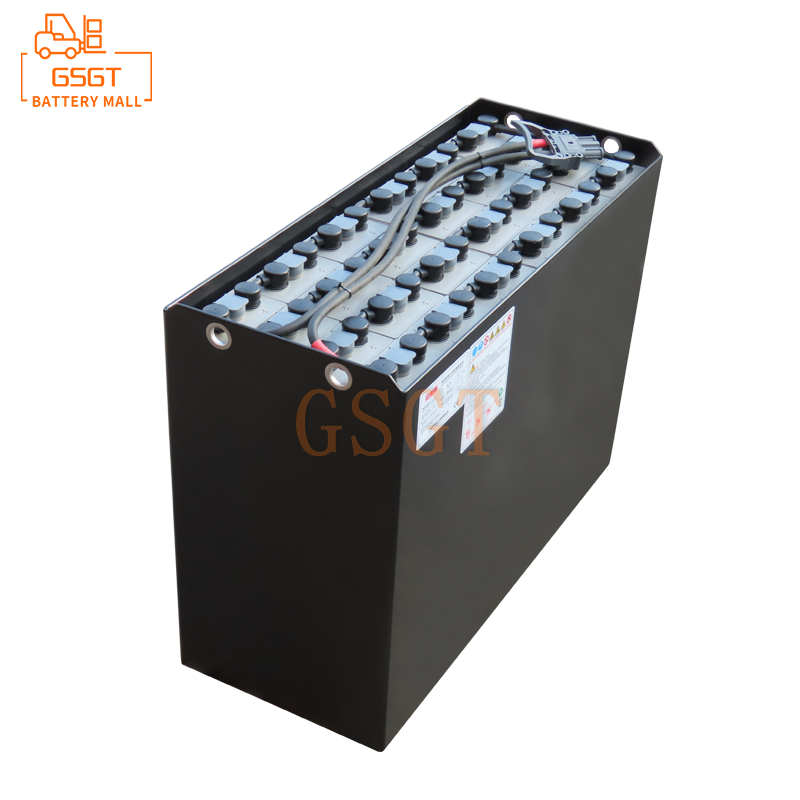Time:2025-07-09 10:26:50
Browse:631
As the power core of forklifts, the performance and lifespan of lead-acid batteries directly affect the working efficiency and usage cost of forklifts. Scientific and reasonable maintenance can effectively extend the service life of the battery and reduce the occurrence of faults. The following is a detailed introduction to the maintenance cycle and precautions of lead-acid batteries for forklifts.
Maintenance cycle
Daily maintenance
The battery of the forklift needs to be inspected before and after daily use. First, check the appearance of the battery to see if there is any leakage or shell cracking. If any abnormality is found, stop using it immediately and deal with it. Secondly, check the connection wires of the battery to ensure they are firmly connected without any looseness or oxidation. If there is oxidation, rinse them with hot water and then dry them. In addition, observe the liquid level of the battery. For maintainable batteries, ensure that the electrolyte level is 10-15mm higher than the plates. If the liquid level is insufficient, add distilled water. Do not add tap water or electrolyte.
Weekly maintenance
A relatively comprehensive inspection should be carried out once a week. Measure the total voltage and the voltage of each cell of the battery. The voltages of each cell should be basically the same. If there is a significant difference, there may be a battery fault. At the same time, check the charging status of the battery to see if the charging is normal and whether the indicator light of the charger is displayed correctly. In addition, clean the dust and dirt on the surface of the battery to keep it clean and dry and prevent short circuits.
Monthly maintenance
A thorough maintenance of the battery is required once a month. Check the condition of the battery plates. Open the battery cover and observe whether the plates are bent, broken, or vulcanized. If there is vulcanization (white powder on the surface of the plates), appropriate overcharging treatment can be carried out. At the same time, check whether the battery casing is deformed and whether the safety valve is working properly. If the safety valve is blocked or damaged, it should be replaced in time. In addition, tighten the connection wires and terminals of the battery to prevent loosening and poor contact.
Quarterly maintenance
The density of the electrolyte in the battery should be measured every quarter. Measure the density of the electrolyte in each individual cell using a densitometer. The density should be approximately 1.28g/cm³ at 25℃. If the density does not meet the requirements, adjustments should be made. At the same time, check the performance of the charger to ensure that the output voltage and current of the charger are normal, so as to guarantee that the battery can be charged normally.
Annual maintenance
Professional personnel should be hired to conduct a comprehensive inspection of the battery once a year. This includes battery capacity tests, internal resistance tests, etc., to assess the performance status of the battery and determine whether it needs to be replaced. At the same time, conduct a comprehensive inspection and debugging of the battery charging system to ensure its normal operation.
Precautions
Charging Precautions
When charging, a dedicated charger should be used. Do not use chargers of other models as substitutes to avoid damaging the battery.
The charging environment should be well-ventilated, kept away from fire sources and heat sources to prevent explosions or fires.
Before charging, the power of the forklift should be turned off first, the battery plug should be removed, and then the charger should be connected for charging. Do not remove the battery plug or touch the electrodes during charging to avoid electric shock accidents.
The charging time should not be too long. Generally, charging should be stopped in time after the battery is fully charged to avoid overcharging. Overcharging can cause the battery to heat up, the electrolyte to be lost, and shorten the battery life.
If the battery is not used for a long time, it should be recharged once every 1 to 2 months to keep the battery fully charged and prevent it from being discharged.
Precautions for Use
To prevent excessive battery discharge, if the forklift is found to have insufficient power during operation, it should be stopped immediately and charged. Excessive discharge can seriously damage the battery.
Do not force the forklift to start when the battery power is too low, as excessive current may damage the battery and motor.
During the operation and driving of forklifts, severe vibration and collision should be avoided to prevent the battery plates from falling off and the shell from cracking.
Batteries should be avoided from being used or stored in high-temperature, low-temperature or humid environments. High temperatures will accelerate the self-discharge of the battery and the evaporation of the electrolyte, while low temperatures will reduce the battery's capacity and discharge performance.
Storage precautions
Batteries should be fully charged before storage and kept in a well-ventilated, dry and cool place, avoiding direct sunlight.
During storage, the battery power should be checked regularly and recharged once every 1 to 2 months to prevent the battery from being discharged.
Do not place the battery together with metal items to avoid short circuits.
If the battery needs to be stored for a long time, the electrolyte should be drained, the battery interior cleaned and dried before storage. When storing, avoid inverting the battery.
Frequently Asked Questions
Question: What causes severe heat generation when a battery is charging?
Answer: Severe heating during battery charging may be due to the following reasons: First, the output voltage of the charger is too high, resulting in an excessive charging current. It is necessary to check whether the charger is functioning properly and replace it if necessary. The second is an internal short circuit of the battery. At this time, the battery will heat up severely and the charging time will be short. It should be stopped from use immediately and the battery replaced. The third issue is that the charging time is too long. Overcharging can cause the battery to heat up. The charging time should be strictly controlled, and the power should be cut off promptly after the battery is fully charged.
Question: What causes the battery fluid level to drop too rapidly?
Answer: A rapid drop in the battery liquid level may be caused by the following factors: Firstly, if the charging current is too large or the charging time is too long, the electrolyte will evaporate too quickly. The output current and charging time of the charger should be adjusted. Secondly, if there are cracks or leakage in the battery casing, the battery casing should be inspected. If it is damaged, the battery should be replaced. In addition, when batteries are used in high-temperature environments, the evaporation of the electrolyte will also accelerate. Therefore, it is advisable to avoid using batteries in such conditions as much as possible.
Question: What should I do if a battery that has not been used for a long time cannot be charged when it is used again?
Answer: If a battery that has not been used for a long time cannot be charged when it is used again, it may be because the battery is severely discharged, causing sulfation of the plates. At this point, you can first try slow charging with a small current. Extend the charging time appropriately to see if the charging function can be restored. If charging still fails, you can pour out the battery electrolyte, replace it with new electrolyte and then charge it again. If none of the above methods can solve the problem, it might be that the battery plates are damaged and a new battery needs to be replaced.
By strictly adhering to the maintenance cycle and following relevant precautions, the performance and service life of lead-acid batteries in forklifts can be effectively enhanced, usage costs can be reduced, and the normal operation of forklifts can be ensured.

$3070

$2440

$8340

$2610

MESSAGE
Professional And Efficient
Security
Affordable Price
Professional Services